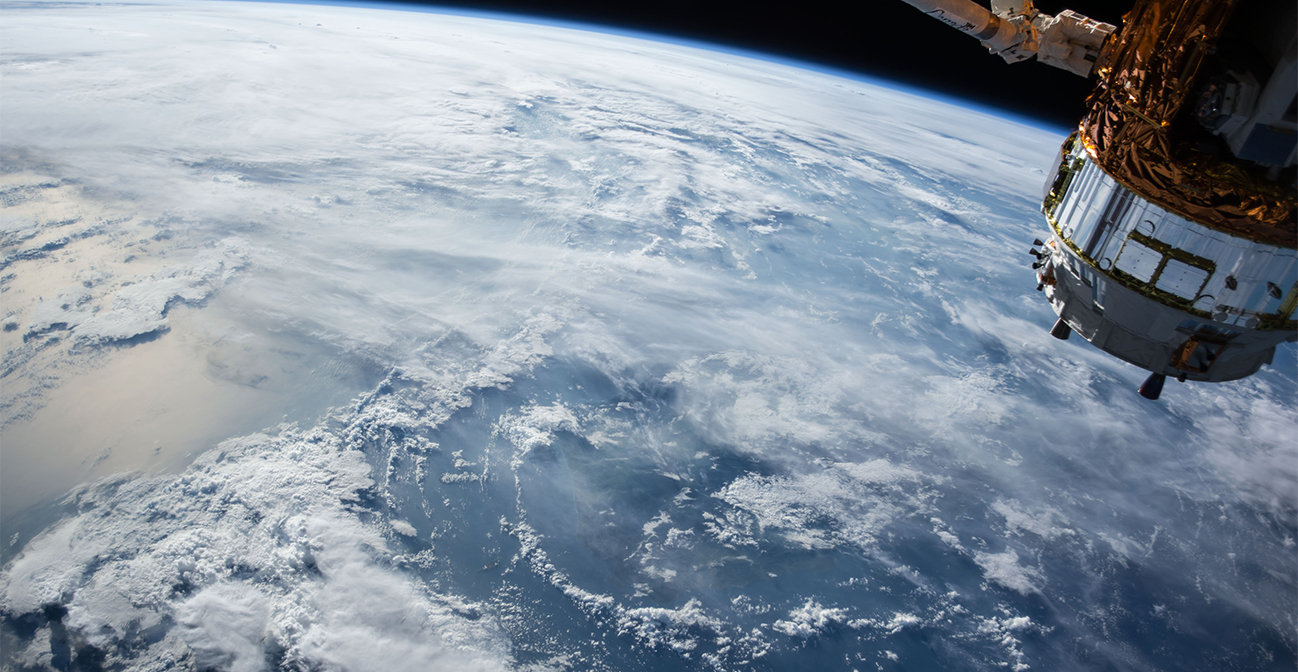Join us for conversations that inspire, recognize, and encourage innovation and best practices in the education profession.
Available on Apple Podcasts, Spotify, Google Podcasts, and more.

Throughout this course, the carbon cycle is featured as one of the most important planetary systems. This lab uses a robust model of the carbon cycle to give you an intuitive sense for how the system works. It also allows you to experiment with how human inputs to the cycle might change global outcomes to the year 2100 and beyond. One especially relevant human impact is the increase in atmospheric CO2 levels. Between 1850 and today, atmospheric concentrations have risen from 287 ppm (parts per million) to over 380 ppm a level higher than any known on Earth in more than 30 million years (see Unit 12 to find out how scientists measure ancient atmospheric carbon levels). You will experiment with the human factors that contribute to this rise, and see how different inputs to the carbon cycle might affect concentrations of the greenhouse gas CO2. launch lab
 Demographics Lab (Units 5, 13)
Demographics Lab (Units 5, 13)
Baby boom. Overpopulation. Birth dearth. These terms all refer to human population growth, and can conjure images of environmental and economic peril. Which are real issues, and should they matter to us?
Demographers like the US Census Bureau make population projections based on mathematical models. In this lab you will explore a fully functional simulation, based on real demographic data. You will examine important demographic trends through a series of guided lessons. After completing these lessons you will understand the factors that control human population growth, recognize the sea-change in human history that is the “demographic transition,” and gain a sense of how population demographics has a very human impact in all areas of our habitable planet. launch lab
 Ecology Lab (Units 4, 7, 9, 13)
Ecology Lab (Units 4, 7, 9, 13)
As you learned in Unit 4, ecosystems are a complex and delicate balancing game. The addition or removal of any species affects many other species that might compete for or provide food. In this lab you will get a chance to “build your own” ecosystem, and explore the effects of these interrelationships.launch lab
In today’s world, with populations and economies booming, the demand for energy is rising. A portfolio of different energy sources is used to meet this demand. Since there is no perfectly clean, safe, and inexpensive source of energy, the composition of this portfolio involves tradeoffs of safety, cost, and-of increasing concern-emissions of greenhouse gases such as CO2 (if you haven’t done the Carbon Cycle lab yet, we recommend you start there). In this lab, your challenge is to try to meet the world’s projected energy demand by choosing from the available energy sources while keeping atmospheric CO2under control and avoiding the particular limits and pitfalls associated with each energy source. launch lab
acid rain
Rainfall with a greater acidity than normal.
adsorption
Process that occurs when a gas or liquid solute accumulates on the surface of a solid or, more rarely, a liquid (adsorbent), forming a molecular or atomic film (the adsorbate). It is different from absorption, in which a substance diffuses into a liquid or solid to form a solution.
anthropogenic
Describing effects or processes that are derived from human activities, as opposed to effects or processes that occur in the natural environment without human influences.
aquifers
Underground formations, usually composed of sand, gravel, or permeable rock, capable of storing and yielding significant quantities of water.
aragonite
A carbonate mineral that forms naturally in almost all mollusk shells, as well as the calcareous endoskeleton of warm- and cold-water corals
base load power
The average amount of electricity consumed at any given time. Base load power stations are designed to operate continuously, unlike peaking power stations that generally run only when there is a high demand.
coral bleaching
Refers to the loss of color of corals due to stress-induced expulsion of symbiotic, unicellular algae called zooxanthellae that live within their tissues. Stress can be induced by: (1) increased water temperatures (often attributed to global warming), (2) starvation caused by a decline in zooplankton levels as a result of overfishing, (3) solar irradiance (photosynthetically active radiation and ultraviolet band light), (4) changes in water chemistry, (5) silt runoff, or (6) pathogen infections.
effluent
An outflowing of water from a natural body of water, or from a man-made structure, generally considered to be pollution, such as the outflow from a sewage treatment facility or the wastewater discharge from industrial facilities.
Fischer-Tropsch process
A catalyzed chemical reaction in which carbon monoxide and hydrogen are converted into liquid hydrocarbons of various forms. The principal purpose of this process is to produce a synthetic petroleum substitute, typically from coal or natural gas, for use as synthetic lubrication oil or as synthetic fuel.
greenhouse gases
Atmospheric gases or vapors that absorb outgoing infrared energy emitted from the Earth naturally or as a result of human activities. Greenhouse gases are components of the atmosphere that contribute to the Greenhouse effect.
pathogen
A biological agent that causes disease or illness to its host.
pelagic
Water coming from the part of the open sea or ocean that is not near the coast
scleractinian corals
Stony or hard corals responsible for the very existence of the reef. As living animals, they provide habitats for many other organisms. The breakdown of their skeletons during calcium-carbonate accretion and especially after death provides material for redistribution and consolidation into the reef framework.
zooxanthellae
Unicellular yellow-brown (dinoflagellate) algae which live symbiotically in the gastrodermis of reef-building coral.
top of page